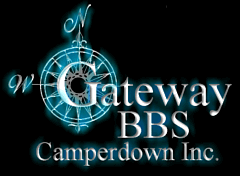
Annual Events.
The Australian Aboriginal Kirrae, Buloke, Tjapwuurong and Gunditjmara tribes all had parts of their territory in the Mortlake area. Being notably less nomadic than tribes in other parts of Australia, houses were well constructed and sometimes built from stone, clustered in groups to form small villages. Several important tribal meeting places were located throughout the area, from the trading station at Mt. Noorat to the meeting places at Salt Creek and Lake Connewarren.
On the Hopkins river near Framlingham are the remains of one of the massive weirs built by the Gunditjmara tribe. Constructed from long wooden poles driven into the ground and then interlaced with sticks horizontally, these were used to catch the eels that inhabited the river. Also of note are the 207+ man made mounds in the area that were used as burial and camping sites, some of which are thought to be at least one thousand eight hundred years old.
Major Thomas Livingston Mitchell was probably the earliest european viewer of the Mortlake area as he passed to the northeast of it during his 1836-37 expedition and named several of the landscapes main features. Mt Shadwell (previously Boorook) and Mt Clerke (Mt Elephant) were named after his friend, Major Thomas Henry Shadwell Clerke, and the Hopkins was named after Major John Paul Hopkins.
Further exploration of the south west was conducted not by the government but by companies and individuals hoping to find a bountiful living in the lands described by Mitchell. Almost certainly the first white men to arrive in Mortlake were David Fisher and his party in 1839, who set up a station which was left under the charge of Thomas Anderson.
It was during the 1850's and 1860's that the settlement of the Mortlake area began in earnest. Many of the buildings constructed during this period are still standing today, Mortlake's Shaw St. Bluestone Precinct being the second most prominent in South West Victoria.
Arguably the most impressive bluestone building in the township itself is The Mill. Built in 1856 by George Bostock, the Mill was originally wind powered. In 1857 it was purchased by the Warrnambool building firm of Aikman, Hamilton and Geddes, who installed a steam engine with a tin chimney. In 1861 further alterations were made when the tin chimney was replaced by the bluestone construct which remains to this day.
The building was an important establishment for the district and in the post war years it became a storage facility for the Soldiers Settlement Commission, selling hardware, iron, lime, fencing materials, timber, horseshoes and even served as the local undertakers. In 1968 the Mill was given classified by the National Trust and in 1998 it was purchased by Mortlake Community Development Committee for the community. The Mill still stands where it has for 140 odd years, at the top of the hill in Mill Street.
Another fascinating building is the Old Mortlake Courthouse, which was built in 1864 for the princely sum of 1,328 pounds. This building served as the Mortlake districts courthouse right through until its closure some 118 years later. In 1969 it was given a "D" classification by the National Trust. A beautiful building, there is little evidence of structural change during its long years of service.
Located next door to the post office is the Old Shire Offices. It was built after a decision in 1876 that the original shire offices were far too small and were in need of replacement. Within a year of that decision Mr George Buckley was given a contract worth 1,057 pounds to construct the new shire offices.
The shire occupied the building in March
1878
and the presidents office was added in 1880. It served the Shire
of Mortlake until it was replaced in 1964. In 1990 the building
became Abbeyfield House, providing accommodation for Mortlake's
older residents.
There are many other historic buildings well
worth seeing, not all of them in Shaw Street,
nor for that matter Mortlake. Willow Cottage,
for example, is a beautiful little cottage made all the more endearing
by the cast iron trim that suggests that this building was probably built
during the 1870's.
Some of the other buildings of interest
include the Mill Cottages ("Moffat" and "Pullenboon"),
the Old Manse, the Old Primary School, the Hexham Hotel,
the Mount Shadwell Hotel, Mac's Hotel and the Stables.